From the first sounds, this pianist’s playing proved irresistible. As a low bass note materializes you are no longer in the zone beyond your nose; inner time intrudes.
This playing of Liszt’s Consolation no. 3 is no pro-forma melody supported by an accompaniment. Every part gets charged with reflections, surrogate meanings tag along its main lines.
You could devour the nourishment in this feast emanating from a wooden box with metal strings, percussed with felt hammers. What kind of hands are responsible?
How did they get out from a renaissance sculpture and end up in the 19th century? What’s his hair like?
Pianists aren’t like this anymore. Clean-cut is the way to go. His expression is suggestive:
He liked to play Chopin. So did someone else. Here’s another pianist, a younger Swiss-Frenchman enjoying a delightful drink in the company of a cackling dame in her silly hat at the exclusive Hotel Ritz in Paris, early 1940s. Her hubby Albert snapped the photo.
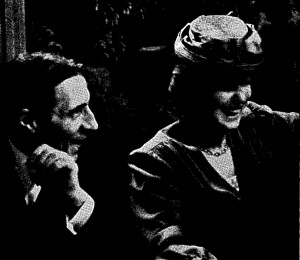
Never saw him laugh in a photo. He was adored by the photographer, who wrote in his prison diaries of glorious evenings spent together while on assignment there, relaxing at the pianist’s apartment over some Chopin and Debussy decanted from his hands. The pianist got quite busy recording in occupied France, 1942, and churned out all 24 of Chopin’s Etudes. The last one of them resembles a roller coaster map, everything repeated, just harmonies shifted for variety’s sake:
Chopin Etude op. 25, no. 12 (1942)
Images come to mind. He singles out the bottom and top tones, the rest gelling like a blur, shining through a foggy uncertainty like this atmosphere:
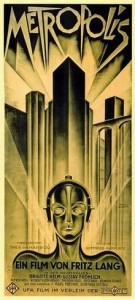 Backing up a mere two years we catch our renaissance man with the renaissance hands having a go at it in occupied Vienna:
Backing up a mere two years we catch our renaissance man with the renaissance hands having a go at it in occupied Vienna:
Chopin Etude in C minor, op. 25, no. 12 (1940)
The Swiss-Frenchman’s blurry musical muddle is nothing like the oldster’s excited mesh of interlocking inner rhythms that vie with attention given to its extremities, not to mention secondary melodies darting between alto voices down into a low baritone, as Chopin wrote it, smeared over by the younger Modernist who over-pedals them into a froth. This complex hive of activity has a different spirit altogether, given a contemplation amidst frenzy buy a wise elder:
All the nature and emotion heard have been sublimated by the first player, who sacrifices it for something greater, a defining sign of Fascism.
Back in 1884, the older player had a colleague of Chopin as his musical guide who caught him at an impressionable age:
There he sits by Liszt’s left knee aside an allegoric play of hands as the pianist by Liszt’s right leg, Arhtur Friedheim, touches his master’s knee, placing his right hand on cross-legged Alexander Siloti, Rachmaninoff’s cousin, who has the standing Moriz Rosenthal’s hand resting on his shoulder, a chain transmitting osmosis and telepathy.
Too bad Emil Sauer (1862-1942) isn’t better known, whereas Alfred Cortot (1877-1962), who informed on his Jewish students to the Gestapo, is highly admired as a pianist, even though his heights are a streamlined reduction of the music’s glorious details and spirit dwelling in the older master’s language.
Sic transit gloria mundi.

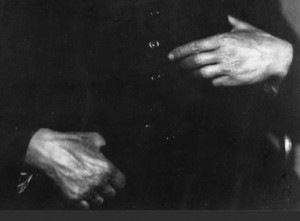
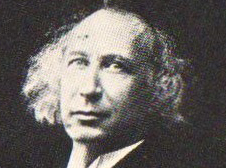
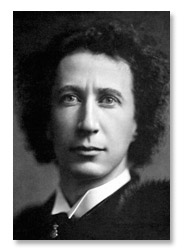
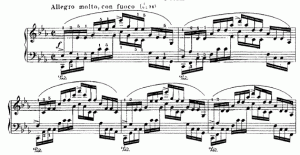

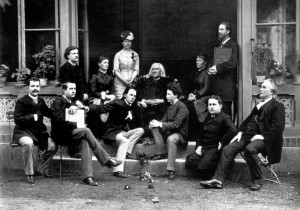
Pleased with myself that I guessed who it was! But are you sure Cortot informed on Jewish students to the Gestapo? My ffirst teacher and her husband were (Jewish) students of his. They complained that he never did anything to help them in their situation, but I never heard them say they knew him to inform on anyone.
You can find easily a lot of information on Cortot’s activities like collaborator and his dreams to become a kind of leader of a French Reich’s Music Chamber. The anthology of studies published under the title The Musical Life under Vichy, Editions Complexe, Paris 2001 (in French) has a special and well-written chapter on Cortot. And there is also a special study on the situations of Jews students…
The late violinist Leon Temerson, who played first violin in his orchestra, had horror stories. Lazare-Levy risked arrest and death by emerging into Paris to knock on Cortot’s door, begging him to intervene with the Gestapo who had captured his son. Cortot pointed out that a war was going on and these things happen. He slammed the door on Levy, whose son was murdered. Cortot was Minister of Culture for Vichy.
Having always admired Cortot’s evanescent artistry…..blown by the wind………..here and there………….always the conductor in his head…………………….I am aghast as a Jew to imagine him betray other sensitive human beings………….who also adored what he did …………and yet he would not save them or help…………………….
Hard to judge if it were not me in that situation but I so dearly hope I would risk all to save all I could………….because why bother if there is no justice????????????